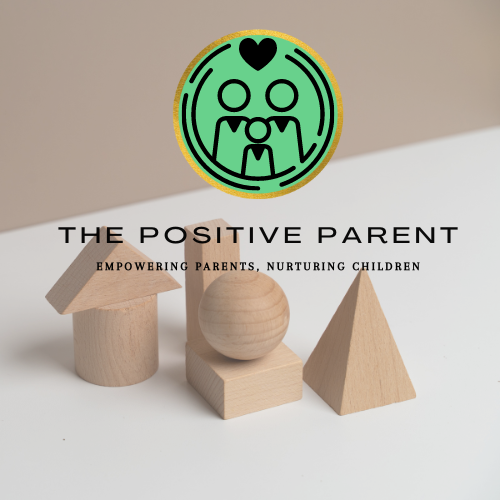How to Handle Tantrums in a Positive Way
Tantrums are a common source of frustration for parents of toddlers and young children. They can be aggravating, draining, and humiliating, especially when they occur in public. Tantrums, on the other hand, are a normal aspect of child development and can be used to teach your child essential skills and values. In this blog post, we will look at what causes tantrums, how to avoid them, and how to deal with them in a constructive way.
What exactly are tantrums, and why do they occur?
A tantrum is a sudden burst of intense emotion expressed by a child through sobbing, yelling, kicking, hitting, or throwing objects. Tantrums typically occur when a child is upset, angry, terrified, sleepy, hungry, or overwhelmed by a situation over which he or she has little control or ability to deal. For example, a child may throw a temper tantrum if:
- They want something that is not permitted or obtainable.
- They are asked to do something they do not wish to do.
- They must give up something that he or she enjoys.
- They are confronted with a change or transition for which he or she is unprepared.
- Others misunderstand or disregard him or her.
- They are overstimulated by noise, lights, or people.
Tantrums are more common among toddlers and preschoolers because their verbal, cognitive, and social skills are still developing. They may lack the ability to articulate their feelings or needs, as well as grasp other people's perspectives or norms. They may also struggle to control their emotions, impulses, and attention. Tantrums allow kids to express their distress and seek attention and comfort from their parents or guardians.
How to Avoid Tantrums
While temper tantrums are unavoidable, there are several tactics that can help minimize their frequency and intensity. Here are some suggestions for avoiding tantrums:
Maintain consistency- Create a daily routine for your child so that he or she knows what to expect. Set and follow clear and fair limitations and guidelines. Explain and follow through on the consequences of disobeying the rules. Praise your youngster for obeying the rules and acting appropriately.
Make a plan- When your child is not likely to be hungry or weary, run errands. Bring snacks, toys, books, or activities to keep your child busy and entertained. Give your child a heads-up before changing activities or leaving a location. "We have five minutes left at the park, then we have to head home" for example.
Allow your child to make appropriate decisions- Try not to say no to everything. Give your child some options and let him or her to chose what to dress, eat, play with, or do. This can make your child feel less upset and more in charge.
Recognize and reward positive behavior- When your child acts well, give him or her extra attention. Give precise and encouraging feedback, such as "You did an excellent job sharing your toys with your sister" or "You waited in the queue so patiently." Hugs, kisses, stickers, or other treats can be used to reward your child.
Avoid situations that are prone to cause tantrums- Recognise and avoid your child's triggers as much as possible. For example, if your child is easily agitated by loud noises, avoid areas that are overly loud. Avoid areas that are overly uninteresting if your child is easily bored.
How to Handle Temper Outbursts
When tantrums occur, it is critical to remain cool and respond positively. Here are some tips for dealing with tantrums:
Make an evaluation- The first stage is to get an understanding of what causes your child's tantrums. Take note of what occurs before, during, and after the outburst. Try to discover your child's underlying emotions, such as fear, anger, or frustration.
Establish a limit- It is critical to teach your child that physical violence is not an appropriate form of self-expression. "There will be no kicking," say firmly yet calmly. We never cause harm to anyone in our family." However, don't expect your child to cease right away. It may take some time for your child to adjust.
Recognize your child's wants- The easiest technique to handle a tantrum is to swiftly determine the nature of the complaint and put it into words. For example, if your 18-month-old is wailing because you won't give him a muffin, remind him, "I can see you really want that muffin." This can assist your child in feeling heard and understood.
Provide empathy and comfort- Demonstrate to your child that you are concerned about his or her feelings and needs. "I know you're upset because you can't have the muffin," you say. It's difficult to hear no." Give your child a gentle hug, kiss, or touch. This might help your child relax and feel secure.
Distract or redirect your attention- Try to divert your child's focus to something more positive or enjoyable. You can, for example, point out something unusual in the environment, such as a bird, a flower, or an automobile. You may also propose something different, such as reading a book, playing with a toy, or working on a puzzle.
Ignore the temper tantrum- If the preceding procedures fail and your child continues to have a tantrum, you may need to ignore it as long as it is not dangerous. If you react with loud, angry outbursts, your child may emulate you. Shouting at a child to calm down is also likely to aggravate the situation. Instead, pretend nothing is going on and avoid eye contact or verbal interaction. This might teach your child that throwing a tantrum will not get him or her what they want. It also gives them space to calm down as sometimes being looked at or someone trying to engage with them can aggravate them further.
Teach coping strategies- When your child is calm and ready to listen, you can teach them coping techniques for dealing with tough emotions and situations. You can encourage your child to take deep breaths, count to ten, utilize positive self-talk, or exercise mindfulness, for example. When you are stressed or unhappy, you can also model these abilities for yourself.
Conclusion
Tantrums are an inevitable and difficult aspect of raising small children. They do not indicate poor parenting or children. They indicate that youngsters are growing and learning. You may assist your child to regulate his or her emotions, develop self-control, and create trust and confidence by employing a positive approach.
References
Mayo Clinic. (2022). Temper tantrums in toddlers: How to keep the peace. Retrieved from https://www.mayoclinic.org/healthy-lifestyle/infant-and-toddler-health/in-depth/tantrum/art-20047845
Child Mind Institute. (n.d.). How to handle tantrums and meltdowns. Retrieved from https://childmind.org/article/how-to-handle-tantrums-and-meltdowns/
Wallace, M. (2015). Managing tantrums. Psychology Today. Retrieved from https://www.psychologytoday.com/us/blog/how-raise-happy-cooperative-child/201506/managing-tantrums





Comments
Post a Comment